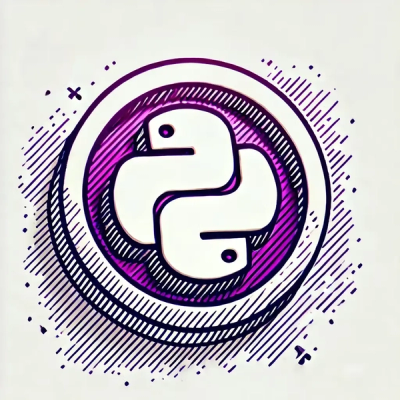ChartIQ React Application
Contents
Overview
The ChartIQ React application is a toolkit of components that enable you to build charting applications in the React framework. The components include everything from a basic chart to a complex, active trader desktop:
AdvancedChart — Creates a full-featured chart with a fully developed user interfaceMultiChart — Displays two advanced charts on screen simultaneouslyActiveTraderWorkstation — Sets up an information-rich desktop for traders who trade frequentlyTermStructure — Creates a term structure chart for working with non–time series dataCustomChart — Integrates native React components with ChartIQ W3C-standard web componentsHelloWorld — Creates a basic chart with no user interface as a starting point for your React app
Note:
-
This application has been designed to simplify the transfer of modules such as src/chartiq/containers/ActiveTraderWorkstation to other applications. We don't expect that developers will use the application as is with all modules included. So, to make transferring modules easier, we more or less duplicated resource and service files in each module.
-
For an example of creating a chart user interface entirely with native React components, see the chartiq-react-seed project.
Requirements
A copy of the ChartIQ library, version 8.3.0 or later.
If you do not have a copy of the library, please contact your account manager or send an email to info@cosaic.io.
To get a free trial version of the library, go to the ChartIQ download site.
Getting started
To implement this project:
- Clone the repository
- Extract the contents of your zipped ChartIQ library package
- Copy the tarball (.tgz file) from the extracted library package into the root of this project
- Run the following commands from the root of the project:
npm install ./chartiq-x.x.x.tgz to install the charting librarynpm install to install the rest of the dependenciesnpm start to start up the development server
- Open your browser to http://localhost:4002 to load the application
Note: When you are upgrading or changing your license, we recommend that you completely remove the old library before reinstalling the new one, for example:
npm uninstall chartiq
npm install ./chartiq-x.x.x.tgz
Customization
Web component templates
The Template.jsx files of the AdvancedChart, ActiveTraderWorkstation, and TermStructure components and the render method of CustomChart contain JSX that is a collection of ChartIQ's user interface web components. You can customize the chart user interface by adding, removing, or modifying UI components. You can also add your own custom React components.
Configuration
You can configure a variety of chart features by modifying the configuration object provided to the component definition files of AdvancedChart, CustomChart, ActiveTraderWorkstation, and TermStructure. Sample configurations are available as getConfig and getCustomConfig functions in the resources files.
A default configuration is part of the ChartIQ library. See the Chart Configuration tutorial for all the configuration details.
You can also modify the CSS in the style sheet files associated with AdvancedChart, CustomChart, and ActiveTraderWorkstation. See the CSS Overview tutorial for information on customizing the chart look and feel.
Component customization
ChartIQ web components can be customized by extending the web component classes. Customization code should run at the time the chart and user interface are created; that is, in the createChartAndUI method. We recommend keeping all customization code in a single file or folder to simplify library version upgrades.
Here's an example of customizing the cq-chart-title component:
import { CIQ } from 'chartiq/js/componentUI';
const ChartTitle = CIQ.UI.components('cq-chart-title')[0].classDefinition;
class CustomChartTitle extends ChartTitle {
update() {
super.update();
const { symbol, symbolDisplay } = this.context.stx.chart;
if (symbolDisplay) {
document.title = document.title.replace(symbol, symbolDisplay);
}
}
}
CIQ.UI.addComponentDefinition('cq-chart-title', CustomChartTitle);
Component integration
CustomChart integrates native React components with ChartIQ's W3C-standard web components.
The RecentSymbols component provides an example of wrapping and enhancing a web component with a React component. RecentSymbols adds a RECENT tab to the lookup controls created by ChartIQ's cq-lookup and cq-comparison-lookup web components. The RECENT tab displays a list of recently used financial instrument symbols maintained by the RecentSymbols component.
The ShortcutDialog component is an example of a React component accessed by a web component. User interaction with a dropdown menu created by a ChartIQ cq-menu web component opens the dialog box created by the ShortcutDialog component. The dialog box enables users to set shortcut keys on the chart's drawing tools.
Enabling plug-ins
ChartIQ comes with a variety of plug-ins that add enhanced functionality to charts. The ChartIQ React application comes with the plug-ins built in but not enabled.
Note: Plug-ins are optional extras that must be purchased. To determine the plug-ins included in your library, see the ./node_modules/chartiq/plugins folder.
The application includes the ChartIQ plug-ins as component resources that are enabled by uncommenting the relevant imports in the component resources file.
For example, to enable the Trade from Chart (TFC) plug-in for AdvancedChart, uncomment the following lines in the resources.js file in the ./src/chartiq/containers/AdvancedChart/ folder:
config.plugins = {
.
.
.
.
.
.
};
To enable the Market Depth chart and L2 Heat Map in AdvancedChart, uncomment the following lines in resources.js:
config.plugins = {
.
.
.
};
and the following lines in main.js:
Important notes
-
This application runs only from IP address 127.0.0.1, hostname localhost, or the explicit list of domains set on your ChartIQ license. If you need to bind the webpack development server to a different host, please contact your account manager to have additional domains added to your license.
-
If the web component polyfill is not required for supported browsers, the download size can be reduced by removing the polyfill script tag in the index.html file.
-
As of version 8.0.0 of the charting library, this project no longer supports Internet Explorer 11. Please contact support@chartiq.com for information on using version 7.5.0 of the charting library to enable this project to work with IE 11.
Questions and support
Contributing to this project
Fork it and send us a pull request. We'd love to see what you can do with our charting tools in React!



